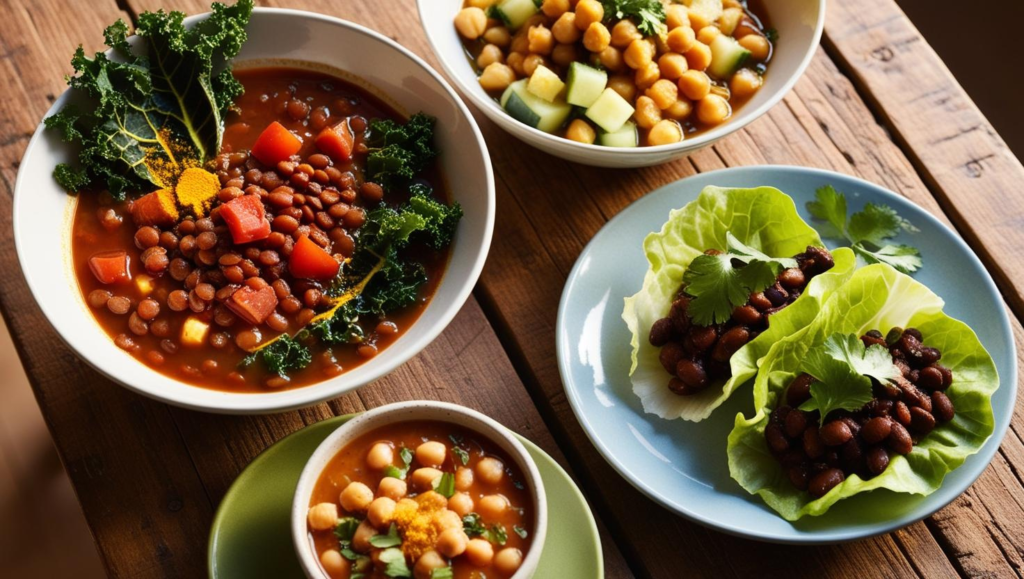Legumes for Diabetes Management:

Legumes for Diabetes Management: A Nutrient-Powered Solution
Diabetes affects over 500 million people globally, making dietary strategies critical for managing blood sugar levels. Among the most potent foods for diabetes care are legumes—a family of plants including lentils, chickpeas, black beans, and peas. Rich in fiber, protein, and low-glycemic carbohydrates, legumes offer a science-backed way to stabilise glucose, improve insulin sensitivity, and reduce diabetes-related risks. This 2000-word guide explores how legumes for diabetes management can transform health outcomes, supported by research, practical tips, and answers to common questions.
1. Why Legumes Are a Diabetes Superfood
Legumes are edible seeds from the Fabaceae family, celebrated for their unique nutritional profile:
- High Fiber: 12–15 grams per cup, slowing carbohydrate digestion and preventing blood sugar spikes.
- Plant-Based Protein: 15–18 grams per cup, promoting satiety and muscle health without raising glucose.
- Low Glycemic Index (GI): Ranging from 10–30, far lower than refined grains or potatoes.
- Magnesium and Zinc are minerals that enhance insulin function and glucose metabolism.
Studies, including a 2021 review in Nutrients, confirm that regular legume consumption lowers HbA1c (average blood sugar) by 0.5% and reduces cardiovascular risks in people with diabetes.
2. Top 6 Legumes for Diabetes Management

Not all legumes are equal. Here are the best options for blood sugar control:
- Lentils (GI: 32): Rich in resistant starch, lentils improve post-meal glucose responses by 20–30%.
- Chickpeas (GI: 28): Their high fiber content (12g/cup) slows glucose absorption and supports gut health.
- Black Beans (GI: 30): Packed with anthocyanins, antioxidants that reduce inflammation linked to insulin resistance.
- Kidney Beans (GI: 24): A top source of soluble fiber, lowering LDL cholesterol in diabetics.
- Peas (GI: 22): High in protein and vitamin C, which combats oxidative stress in diabetes.
- Soybeans (GI: 16): Contains isoflavones that improve insulin sensitivity in type 2 diabetes.
3. How Legumes Improve Blood Sugar: 5 Mechanisms
3.1. Slow Glucose Absorption
The fiber and resistant starch in legumes delay carbohydrate breakdown, flattening post-meal blood sugar spikes. A 2020 study in Diabetes Care found diabetic patients eating legumes daily had 35% lower postprandial glucose levels.
3.2. Enhance Insulin Sensitivity
Magnesium in legumes activates insulin receptors, while zinc protects pancreatic beta cells. A meta-analysis in PLOS ONE linked 50g of daily legumes to a 20% improvement in insulin sensitivity.
3.3. Promote Healthy Gut Microbiota
Legumes feed beneficial gut bacteria that produce short-chain fatty acids (SCFAs), compounds shown to reduce inflammation and improve glucose metabolism.
3.4. Reduce Cravings
Their protein and fiber content keeps you full longer, preventing overeating and weight gain—a key factor in type 2 diabetes.
3.5. Lower Cardiovascular Risks
Legumes reduce LDL cholesterol, blood pressure, and triglycerides, addressing leading causes of death in diabetics.
4. Legumes vs. Other Carbohydrates: Why They Win
Compared to refined grains (e.g., white rice, bread), legumes:
- Release glucose 3x slower due to higher fiber and lower GI.
- Provide 2x more protein, aiding muscle maintenance in diabetics.
- Contain zero added sugars, unlike processed snacks.
A 2017 trial in Clinical Nutrition found that replacing half a serving of rice with lentils cut blood sugar spikes by 40%.
5. How to Incorporate Legumes into a Diabetic Diet

5.1. Start Slowly
Introduce ½ cup daily to avoid bloating. Soak dried legumes overnight to reduce anti-nutrients.
5.2. Balanced Portions
Pair 1 cup cooked legumes with non-starchy veggies (e.g., spinach, broccoli) and healthy fats (e.g., olive oil).
5.3. Recipe Ideas

- Lentil Soup: Combine lentils, tomatoes, turmeric, and kale.
- Chickpea Salad: Mix chickpeas, cucumber, lemon, and parsley.
- Black Bean Tacos: Use lettuce wraps instead of tortillas.
5.4. Avoid Pitfalls
- Skip canned legumes with added salt or sugar. Rinse thoroughly if using canned.
- Monitor portions: ½–1 cup per meal is ideal for steady glucose.
6. Q&A: Legumes for Diabetes Management Demystified
Q1: How often should diabetics eat legumes?
Aim for 3–5 servings weekly (1 serving = ½ cup cooked). Studies show this frequency optimizes HbA1c reduction.
Q2: Can legumes replace meat in a diabetic diet?
Yes! Legumes provide plant-based protein without saturated fat. Replace 2–3 meat meals weekly with lentil curry or black bean chili.
Q3: Do legumes raise blood sugar?
No—their low GI and high fiber prevent spikes. Pairing them with healthy fats (e.g., avocado) further stabilizes glucose.
Q4: Which legumes are best for type 1 diabetes?
All legumes work, but lentils and chickpeas have the lowest GI. Consult your healthcare provider to adjust insulin dosing.
Q5: Are there risks to eating legumes with diabetes?
Overeating may cause bloating. Start with small portions and drink water to ease digestion.
7. Scientific Evidence: Legumes and Diabetes Outcomes
- A 2022 meta-analysis in The American Journal of Clinical Nutrition found legumes reduce type 2 diabetes risk by 35%.
- The PREDIMED study noted diabetics eating 3+ weekly legume servings had 40% lower heart disease mortality.
- Research in Diabetes & Metabolism shows legumes improve glycemic control better than whole grains.
8. Beyond Blood Sugar: Additional Health Benefits
- Weight Management: Legumes’ fiber and protein aid sustainable weight loss.
- Kidney Protection: Their plant-based protein reduces strain on kidneys compared to animal protein.
- Anti-Inflammatory Effects: Antioxidants in black beans and lentils combat chronic inflammation.
9. The Verdict: Legumes as a Diabetes Game-Changer
Legumes for diabetes management are not a trend—they’re a time-tested, research-backed solution. By stabilizing blood sugar, enhancing insulin function, and protecting against complications, legumes empower diabetics to take control of their health. Pair them with regular exercise, stress management, and medical guidance for optimal results.



Pingback: Chia Seeds Health Benefits: 7 Reasons to Unlock This Superfood